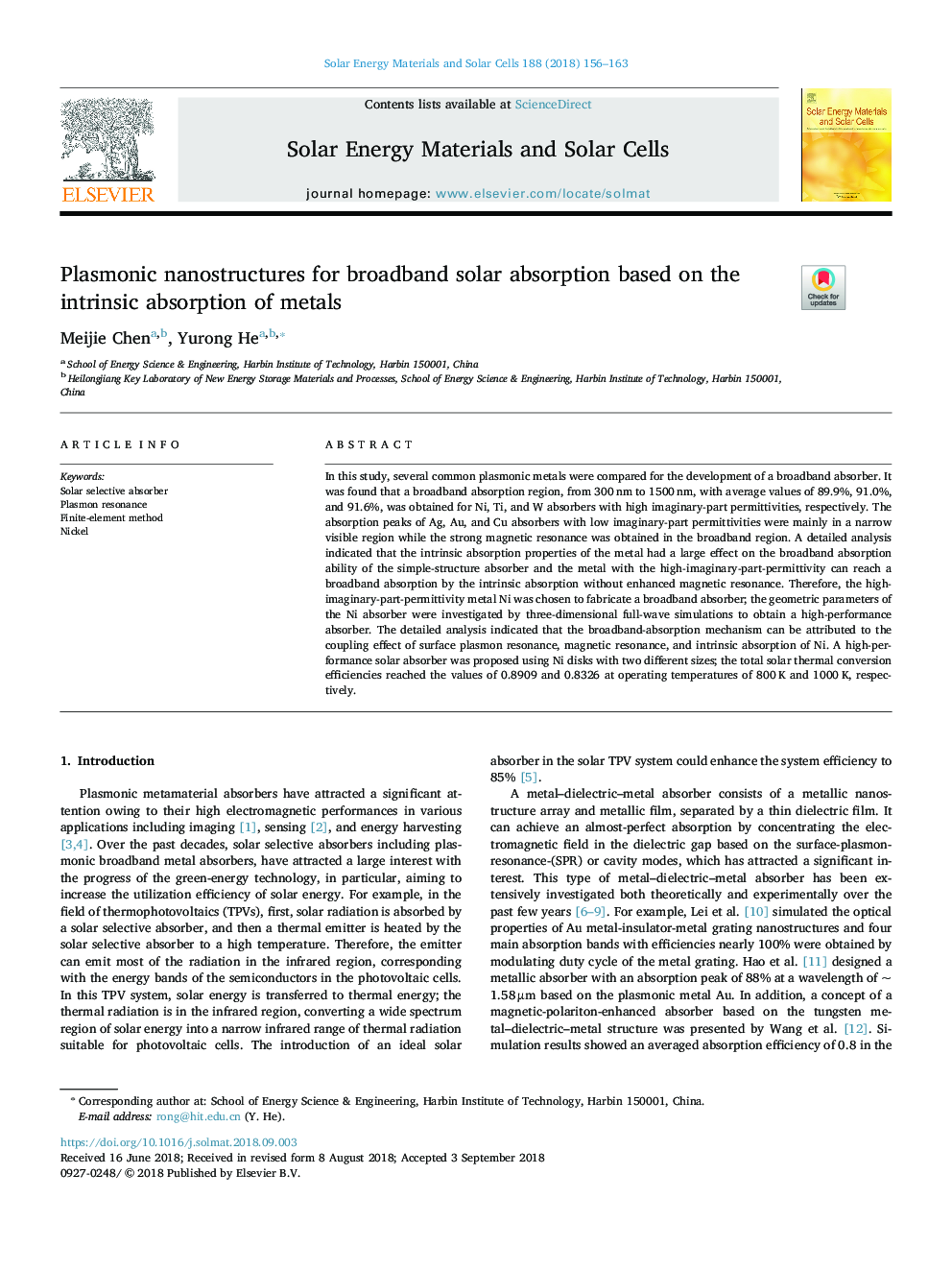| Article ID | Journal | Published Year | Pages | File Type |
|---|---|---|---|---|
| 10139004 | Solar Energy Materials and Solar Cells | 2018 | 8 Pages |
Abstract
In this study, several common plasmonic metals were compared for the development of a broadband absorber. It was found that a broadband absorption region, from 300â¯nm to 1500â¯nm, with average values of 89.9%, 91.0%, and 91.6%, was obtained for Ni, Ti, and W absorbers with high imaginary-part permittivities, respectively. The absorption peaks of Ag, Au, and Cu absorbers with low imaginary-part permittivities were mainly in a narrow visible region while the strong magnetic resonance was obtained in the broadband region. A detailed analysis indicated that the intrinsic absorption properties of the metal had a large effect on the broadband absorption ability of the simple-structure absorber and the metal with the high-imaginary-part-permittivity can reach a broadband absorption by the intrinsic absorption without enhanced magnetic resonance. Therefore, the high-imaginary-part-permittivity metal Ni was chosen to fabricate a broadband absorber; the geometric parameters of the Ni absorber were investigated by three-dimensional full-wave simulations to obtain a high-performance absorber. The detailed analysis indicated that the broadband-absorption mechanism can be attributed to the coupling effect of surface plasmon resonance, magnetic resonance, and intrinsic absorption of Ni. A high-performance solar absorber was proposed using Ni disks with two different sizes; the total solar thermal conversion efficiencies reached the values of 0.8909 and 0.8326 at operating temperatures of 800â¯K and 1000â¯K, respectively.
Related Topics
Physical Sciences and Engineering
Chemical Engineering
Catalysis
Authors
Meijie Chen, Yurong He,
